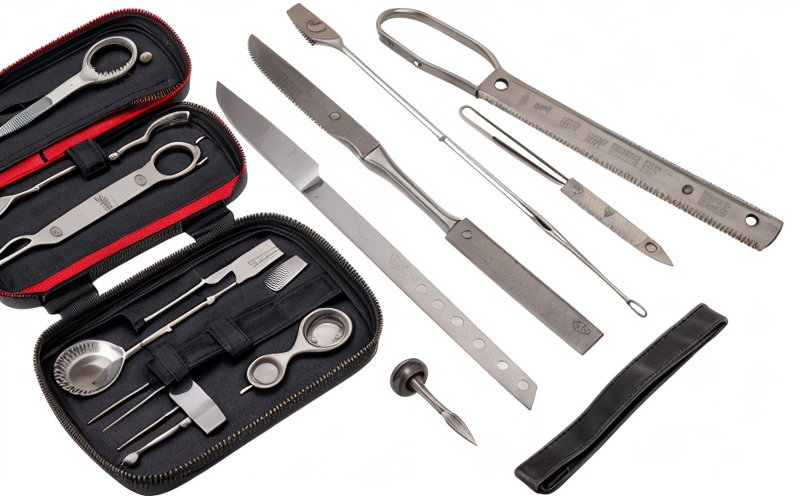ASTM F899 Mechanical Testing of Stainless Steel Alloys for Surgical Use
The ASTM F899 standard is a critical benchmark in the medical device industry, particularly for surgical instruments and tools. This test method provides detailed guidelines for evaluating the mechanical properties of stainless steel alloys intended for use in surgical applications. The primary focus is on ensuring that these materials meet stringent requirements for strength, ductility, and resistance to deformation under stress.
ASTM F899 specifies a series of tests designed to assess various mechanical characteristics including tensile strength, yield strength, elongation, reduction of area, and hardness. These properties are essential for determining the suitability of stainless steel alloys in surgical environments where durability, precision, and biocompatibility are paramount.
The testing process begins with careful selection and preparation of specimens according to ASTM F899 specifications. This includes precise machining techniques to ensure uniformity and consistency across samples. Once prepared, the specimens undergo tensile testing using specialized equipment designed to apply controlled loads until failure occurs. The resulting data provides comprehensive insights into how well the material performs under stress.
Hardness tests follow closely behind, measuring the resistance of the alloy to indentation by a sharp indenter such as a carbide ball or cone. This information helps further validate the structural integrity and reliability of the stainless steel used in surgical instruments.
The results from these mechanical tests are then analyzed against industry standards like ISO 10993-4 for biocompatibility assessments, ensuring that not only do the materials perform well mechanically but also remain safe when used within the human body. Compliance with such stringent criteria underscores the importance of thorough quality control measures throughout every stage of production.
By adhering to ASTM F899, manufacturers can ensure their products meet regulatory requirements and provide reliable performance during critical surgical procedures. This standard plays a vital role in safeguarding patient safety by promoting consistent quality across all stages of development from raw material selection through final assembly.
The application of this test method extends beyond just compliance; it also contributes significantly to innovation within the field of medical device manufacturing. By continually pushing boundaries and seeking ways to improve upon existing standards, companies can develop safer, more effective surgical tools that contribute positively towards better patient outcomes.
Applied Standards
| Standard Name | Description |
|---|---|
| ASTM F899 | Method for Tensile Testing of Stainless Steel Alloys Intended for Use in Surgical Instruments and Tools. |
| ISO 10993-4 | Biocompatibility Evaluation – Particular Considerations for Materials Intended for Use in Implantable Medical Devices. |
The ASTM F899 mechanical testing procedure is complemented by other relevant international standards such as ISO 10993-4, which focuses on biocompatibility evaluations. Together, these guidelines form a robust framework that ensures the highest level of assurance regarding material performance and safety.
Industry Applications
| Application Area | Description |
|---|---|
| Surgical Instruments | Instruments like scalpels, forceps, and retractors require materials that can withstand repeated use without losing their sharpness or integrity. |
| Endoscopic Devices | These devices must be made from highly durable alloys to prevent damage during insertion into the body. |
| Bolsters and Spacers | Surgical bolsters and spacers need materials that are stable under pressure without deforming or breaking. |
The use of ASTM F899 ensures that these components meet rigorous performance expectations, contributing to improved surgical procedures and better patient outcomes. The mechanical properties tested by this standard directly influence the functionality and longevity of medical devices used in hospitals worldwide.
Competitive Advantage and Market Impact
- Maintains regulatory compliance ensuring safe and effective use of products.
- Enhances product reliability through thorough quality assurance processes.
- Promotes continuous improvement by benchmarking against industry best practices.
- Facilitates innovation in material science leading to improved surgical tools.
By adopting ASTM F899 as part of their quality management systems, companies gain a competitive edge by producing high-quality medical devices that adhere strictly to global standards. This not only enhances market reputation but also fosters trust among healthcare providers and patients alike.





